Charts of the Week
Current Economic Trends from 27 to 31 December 2021: consumer prices, turnover based on fiscal verification of invoices, turnover in trade and other
The year-on-year increase in consumer prices strengthened further in December (to 4.9%). In addition to higher energy prices, supply chain disruptions also contributed to inflation in the context of rapid recovery; prices for food, consumer goods and durable goods are gradually rising. In trade, turnover exceeded the level from the same period of 2019 in most sectors as early as in October, while in market services, only travel and employment agencies fell far short of pre-epidemic levels. According to data on fiscal verification of invoices, turnover at the end of the year was slightly lower than in the same period of 2019.
Consumer prices, December 2021
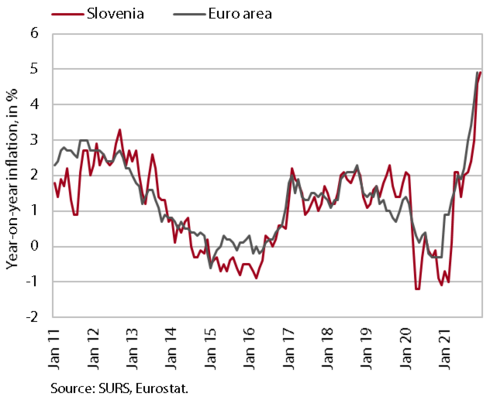
Year-on-year consumer price inflation continued to rise, reaching 4.9% in December 2021. Inflation continues to be driven mainly by higher energy prices and supply chain problems. Although the year-on-year increase in oil product prices slowed slightly towards the end of the year in the face of falling oil prices on international markets and the government's decision to re-regulate heating oil margins, the year-on-year increase was still around 30%. The rise in heat energy prices continued to accelerate rapidly, reaching a 70% year-on-year increase in December. At the end of last year, food prices also rose sharply year-on-year (by 4%), amid the lower base and a significant monthly increase (2.1%). Due to rising car prices, prices of durable goods are also rising, by 6.5% year-on-year, and prices of semi-durable goods increased by 4.8%. At the end of last year, the year-on-year increase in services prices (1.5%) was sustained.
Turnover based on fiscal verification of invoices, 12–25 December 2021
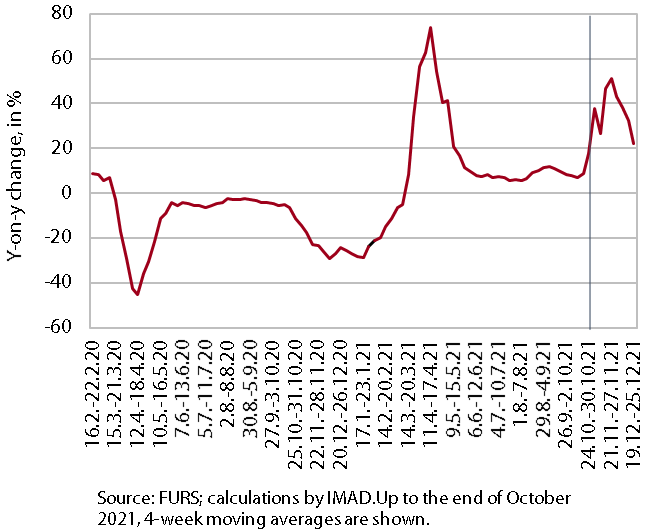
According to data on fiscal verification of invoices, total turnover between 12 and 25 December was 27% higher year-on-year and 1% lower than in the same period of 2019. Year-on-year growth was lower than in the previous two weeks, mainly due to a higher base resulting from temporary partial relaxation of operating restrictions between 15 and 23 December 2020. This was mainly reflected in lower year-on-year turnover growth in trade and some personal services. However, year-on-year growth was still very high for activities that were almost completely shut down in the same period of 2020 – mainly tourism-related services. Total turnover was slightly lower than in the same period of 2019, after having been exceeded in previous months. Turnover in trade was similar to the same period before the epidemic, while in other services the gap with pre-crisis levels remained high (30% in accommodation and food service activities, 50% in creative, arts and entertainment activities and in gambling and betting activities, and 70% in travel agency activities).
Turnover in trade, October 2021
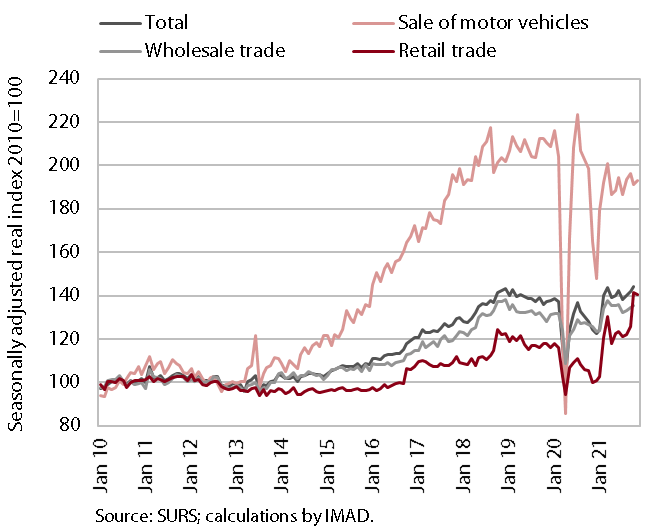
In October, turnover in trade increased for the third month in a row. The month-on-month growth was mainly due to high growth in retail trade, where, in addition to a steady increase in non-food and food sales, sale of automotive fuels increased by as much as a third. Due to low turnover following the declaration of the epidemic and the introduction of restrictions on the sale of goods and services in October 2020, turnover in this sector almost doubled year-on-year; it was also almost a third higher than in October 2019. In total, turnover in trade in October was 12% higher year-on-year and 4% higher than in October 2019. Of all the main segments, turnover remained lower only in the sale of motor vehicles. According to the preliminary data, turnover in this segment increased in November, while it decreased slightly in retail trade.
Turnover in market services, October 2021
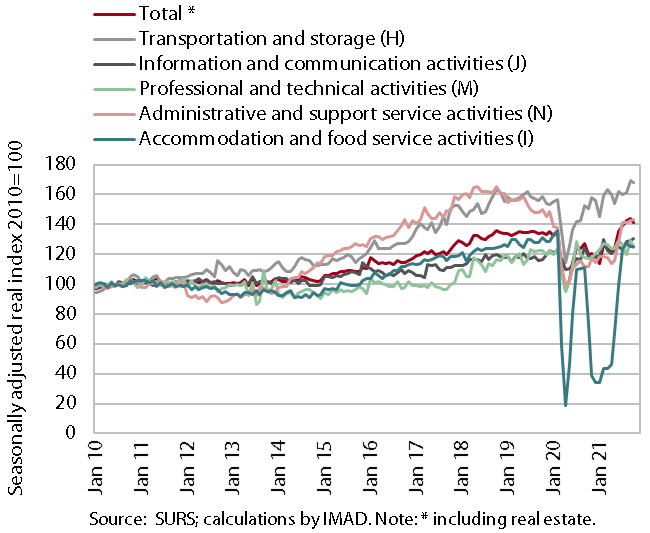
In October, real turnover in market services decreased. After five months of growth, it fell by 1.7% month-on-month and was 16.8% higher year-on-year. The decline was most pronounced in professional and technical activities, mainly due to a renewed drop in turnover in architectural and engineering services. Turnover in transportation, accommodation and food service activities and administrative and support service activities also remained at a high level, increasing again in travel agencies while decreasing in employment agencies. Turnover growth continued only in information and communication activities, due to higher sales of computer services in the domestic and foreign markets. Turnover in October was higher year-on-year in all market services, but compared to the same month in 2019, only travel and employment agencies saw significantly lower turnover (by 46% and by 22% respectively).
Bond, Q4 2021
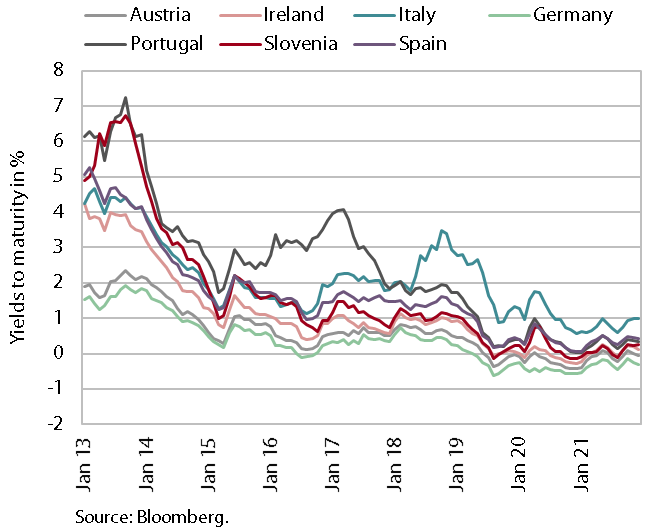
Yields to maturity of euro area government bonds rose slightly in the last quarter of last year, but still remain very low. The higher yield to maturity of government bonds was influenced by the further rise in inflation in the euro area and the decision by ECB to gradually scale back expansionary monetary policy measures. The yield to maturity of the Slovenian bond was thus 0.25% in the last quarter. The spread to the German bond was 49 basis points, about 15 basis points higher than in the previous quarter, which is comparable to the pre-epidemic period.
